Saint Basil the Great was the archbishop of Caesarea Cappadocia (now the city of Kayseri, Туреччина). During his lifetime, he enjoyed great authority, contemporaries called it "the praise of the Church". His wisdom and education were known far beyond Asia Minor, where he performed his ministry. He is the author of many theological and liturgical texts. Respecting his works and the depth of theological thought, the Christian Church calls Basil the Great a universal teacher.
The beginning of veneration of St. Basil the Great in Ukrainian lands coincides with the beginning of the spread of Christianity in the territory of Kyivan Rus, as he is a saint of the Church and one of the most famous saints. But his special respect is also definitely connected with that, that he was the heavenly patron of Prince Volodymyr the Great of Kyiv, who was baptized with the name Vasiliy. "The Tale of Bygone Years" tells us about the construction of churches in honor of the saint in Kyiv, Vyshhorod and other cities. Other princes also received the name Vasiliy at baptism, in particular, Volodymyr Monomakh, який в 1078-1094 years reigned in Chernihiv.
In general, this name was widespread, which, of course, is connected with the veneration of St. Basil. It should be noted, that the name Vasyl was also popular in the Tarnovsky family. In general, it is accrued in the family 5 men with this name.
The memory of Basil the Great falls on the same day as the Feast of the Circumcision of the Lord 14 January for Nov. Article. / 1 January according to Art. Article.
From the entire large corpus of Saint Basil's works in the museum, we find his liturgical and canonical works in the composition of various old prints. Basil the Great is the author of the eucharistic prayer of the liturgy, which bears his name. The observance of the liturgy of Basil the Great is placed in the liturgy. In these liturgical books from the museum's collection of the text of the liturgy, beautiful engravings with a full-length image of the saint and decorated screens precede. Unfortunately, in the oldest museum employee (inv. No. Al-616) 1604 year of publication of the engraving with the saint is lost. The book was printed at Fedor Balaban's Stryatyn printing house, which was founded by the Orthodox Lviv bishop Gedeon Balaban. It was at that time that the monk Pamva Berinda - an outstanding highly educated person - worked there: мовознавець, письменник, printer and xylographer. Certainly, he directly participated in the publication of this official.
The book is decorated with the coat of arms of Bishop Gideon, nice screensavers, limbs, capital letters. For unknown reasons and purposes, many prints were cut from the book, including the image of St. Basil. The text of the prayers in the liturgy is preceded by "Instructions to the Priests" of St. Basil. At one time, the book belonged to the Trinity Church of the village. Smyach (now Koryukivskyi district).
Engravings are very stylistically similar to each other, albeit with their own slight differences, with the image of St. Basil the Great are in the archives of two printing houses: Lviv printer Mykhailo Slozka 1646 year of publication (inv. No. Al-674) and Kyiv-Pechersk Lavra 1653 year (inv. No. Al-423). On both engravings, the saint is wearing a polystavrion feloni (multi-christian). In Byzantium, before the sakos became a common bishop's vestment, such felon was initially worn only by patriarchs, and over time they began to wear metropolitans as well, archbishops and bishops. A large omophorion is worn on top of the felon. The right hand is depicted in a blessing gesture, the saint holds the Gospel in his left hand. The engravings differ in the ornamental decoration of the frame, placement of the inscription of the name of the saint and the image of the foot. Both engravings do not have xylograph signatures. The book of the Lavra print belonged to the St. Michael's Church in the village. Brusylov.
The Lviv edition, according to the entry in the book, "was bought by a pious man named Simeon son Hrytsukov [in the village] Dorogoshkov Malom, the lack of her mercy of Panya Krakowski to save her, nd absolution, to whom the Lord be merciful ".
The engraving from the servant is completely identical to the engraving from Mykhailo Slozka's servant 1712 year (inv. No. Vp-1474/3) from another Lviv printing house, namely, the Assumption Stauropygny Brotherhood. It is additionally decorated with a second ornamental frame and a special instructive note - a canonical warning that no bigamist should dare to be a clergyman according to 17 Apostolic rule and 12 rules of Basil the Great. According to the entry in the book, "bought by the brotherhood of the Klebanskaya temple and church (?) to the Church of the Intercession of the Most Holy Theotokos.
The engraving from the official is distinguished by its originality 1697 year from the printing house of the Trinity-Illinsky Monastery in Chernihiv (inv. No. Al-431). The book is a small, convenient pocket format. It could be used at cathedral services, as it does not require the use of an analogue stand. Saint Basil is also depicted in a felon, but not to the baptized, in a miter - a liturgical headdress, in his hand he holds a staff with a handkerchief. Using a handkerchief is a local tradition, which is due to the cold climate. It protects the hand from the cold, and is used extremely rarely in Greek churches. Previously, the servant belonged to the Domnytskyi Men's Monastery of the Nativity of the Virgin.
Texts of prayers composed by Basil the Great are placed in various church services, as, for example, midnight every day, 6 and 9 times and a big dinner. The order of these services can be found in one of the most used liturgical books - the Chronicle, in which the texts of the constant prayers of the daily circle of divine services are placed. Below is a photo from the Chronicle from the museum collection (inv. No. Al-350) 1742 year of publication (printing house of the Kyiv-Pechersk Lavra), that comes from the collection of Basil Tarnowska.
Prayers of Saint Basil, of the Archbishop of Caesarea of Cappadocia are also part of the cell morning prayer rule of an Orthodox Christian. They are also in the prayer book (inv. No. Al-460) 1797 year (publication of the Kyiv-Pechersk Lavra) from the library of the famous Chernihiv region expert Count Hryhoriy Miloradovich. There is an inscription on the endpaper of the book: “This prayer book was presented by the head of the former hospital of the Kiev-Pechersk Lavra, father Ilya, who was then Anna Ivanovna Vishnevskaya, again bound 1843 June 15 number belongs to Anna Ivanovna Tumanskaya". The fifth "Lord Almighty..." and the sixth "We will bless you, High God..." the prayers belong to the authorship of St. Basil, although in this book there is no corresponding inscription of the name of the saint above them.
The prayers of Basil the Great are included in the prayer rule of believers, who are preparing for Holy Communion, as it is clearly seen in the book for home prayer "Canonnik" (Інв. № Al-1529) issued in 1746 year in the printing house of the Chernihiv Trinity-Elijah Monastery. The old print from the museum collection belonged to the relatives of the famous compatriot, epidemiologist and historian Opanas Shafonskyi, namely the husband of his cousin.
"Proceeding to Holy Communion" is preceded by an interesting engraving. Jacob is depicted in the corners, brother of the Lord, Basil the Great, John Chrysostom and Grigoriy Dvoeslov are saints whose liturgies are named after them in their editions. Liturgy is the most important Christian service during which the Sacrament of the Eucharist or Communion is performed. The sacrament is the meaningful center of the liturgy. Therefore, in the center of the engraving, Jesus Christ is depicted at the Last Supper.
The connection of the above-mentioned saints with the liturgy is even more obvious, including Basil the Great, can be seen on embroidered covers, with which they cover the Eucharistic Chalice. Quilting is made of gold and silver threads, multi-colored silks "to attach". The faces and hands of the figures are picturesque.
The image of St. Basil can also be found on other liturgical items from the museum collection, namely, on religious vestments. In connection with the establishment in Byzantium at the end of the XI century. during the holidays in honor of the three saints, common images of Basil the Great were widely distributed, Gregory the Theologian and John Chrysostom. Especially many such images can be found on haptized epitrachyls of the XVII-XVIII centuries. For example, inv. №№ I-1352, I-1353, I-1382 and others.
A wonderful engraving with three saints also adorns the collection of sermons of Chernihiv Archbishop Lazar Baranovych "Trumpets for the Day... (inv. №. Al-966) 1674 year of publication (printing house of the Kyiv-Pechersk Lavra). "The Word on the Holy Three Saints" is preceded by the image of the saints in full episcopal vestments, who preach from pulpits in the church.
Also some works of St. Basil, of the Archbishop of Caesarea Cappadocia were included in the corpus of canon law of the Church. From his letters to other bishops was selected 92 rules, relating to various aspects of church life. Together with other canons, they are part of the Nomocanons. That was the name of the collections, containing church rules (Holy Apostles, Ecumenical and Local Councils, rules of the holy fathers) and state laws, which concerned church matters. In Nomokanon (inv. No. Al-429) 1629 year published in the printing house “Great Lavra of the Caves in Kyiv” (when Peter Mohyla was the archimandrite) church rules are placed according to the thematic index. References to one or another canon are indicated in the margins of the book. For example, "You. Vel." and rule number. Книга, stored in the museum belonged to the Transfiguration Men's Monastery in Maksakiv, as evidenced by the record in it.
__________________
Collection Cyrillic old collection of Chernihiv Historical Museum. В.В.Тарновського: Catalog / Compilers S.O. Polovnikova, І.М. Ситий. К., 1998.
Zaichenko V.V. Gapti XVII-XIX centuries. Chernihiv: "Desna" publishing house, 1991.
Старший науковий співробітник музею,
Candidate of Theology Miroslav May-Boroda

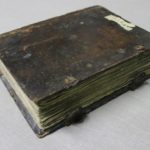



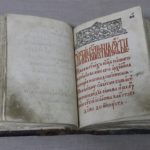


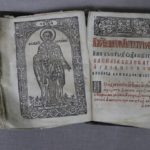








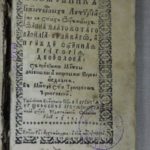

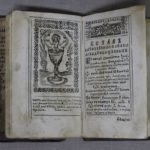




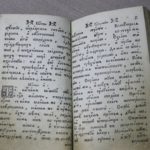
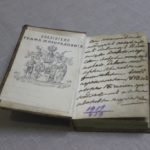

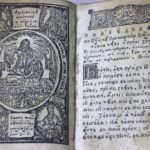


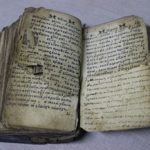





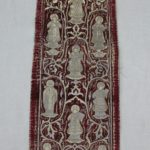

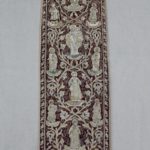





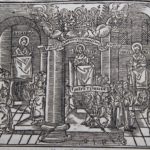
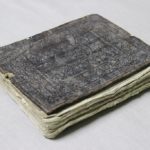

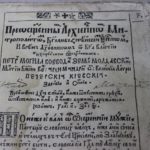
More Stories
Exhibition “In memory of cultural workers...”
Congregant of Metropolitan Peter Mohyla and Hetman Ivan Vyhovsky from the Baturyn Monastery
2022 рік: Headquarters documents of the RF Center troops